
|
Astronomy Picture Of the Day (APOD)
 The Crown of the Sun
The Crown of the Sun
7.04.2006
During a total solar eclipse, the Sun's extensive outer atmosphere or corona is an awesome and inspirational sight. The subtle shades and shimmering features of the corona that engage the eye span a brightness range of over 10,000 to 1, making them notoriously difficult to capture in a single picture.
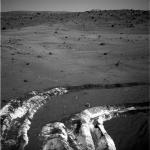 Unusual Bright Soil on Mars
Unusual Bright Soil on Mars
6.04.2006
What is this bright soil on Mars? Several times while rolling across Mars, the treads of the robotic rover Spirit have serendipitously uncovered unusually bright soil. Spirit uncovered another batch unexpectedly last month while rolling toward its winter hibernation location on McCool Hill.
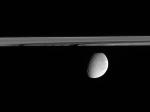 Slightly Beneath Saturns Ring Plane
Slightly Beneath Saturns Ring Plane
5.04.2006
When orbiting Saturn, be sure to watch for breathtaking superpositions of moons, rings, and shadows. One such picturesque vista was visible recently to the robot Cassini spacecraft now orbiting Saturn. In late February, Cassini captured a Rhea, the second largest moon of Saturn, while looking up from slightly beneath Saturn's expansive ring plane.
 A Total Solar Eclipse over Turkey
A Total Solar Eclipse over Turkey
4.04.2006
Some views of last week's total eclipse of the Sun were better than others. One spectacular view occurred over Adrasan (near Antalya), Turkey and was captured there by industrious astrophotographer Stefan Seip. The above digital mosaic caught the Moon in several stages as it moved between the Earth and the Sun.
 Stars and Dust Across Corona Australis
Stars and Dust Across Corona Australis
3.04.2006
A cosmic dust cloud sprawls across a rich field of stars in this gorgeous wide field telescopic vista looking toward Corona Australis, the Southern Crown. Probably less than 500 light-years away and effectively blocking...
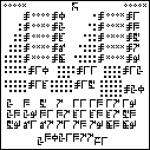 A Cosmic Call to Nearby Stars
A Cosmic Call to Nearby Stars
2.04.2006
If you could send a message to an alien civilization, what would you say? The people from the Cosmic Call project sent the above image as the first page of a longer message. The message was broadcast toward local stars by radio telescope during the summer of 1999. Another message was sent in 2003.
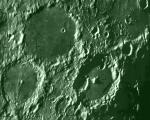 Hubble Resolves Expiration Date For Green Cheese Moon
Hubble Resolves Expiration Date For Green Cheese Moon
1.04.2006
Using the new camera on the Hubble Space Telescope, astronomers have been able to confirm that the Moon is made of green cheese. The telling clue was the resolution of a marked date after which the Moon may go bad.
 Solar Eclipse and SOHO
Solar Eclipse and SOHO
31.03.2006
Neither rain, nor snow, nor dark of night can keep the space-based SOlar Heliospheric Observatory (SOHO) from watching the Sun. In fact, from its vantage point 150 million kilometers sunward of planet Earth, SOHO's cameras can always monitor the Sun's outer atmosphere, or corona.
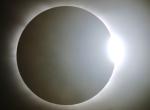 When Diamonds Aren t Forever
When Diamonds Aren t Forever
30.03.2006
The track of totality for the first solar eclipse of 2006 began early yesterday on the east coast of Brazil and ended half a world away at sunset in western Mongolia. In between...
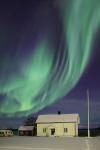 Green and Black Auroras Over Norway
Green and Black Auroras Over Norway
29.03.2006
What causes gaps between aurora curtains? These unusual gaps can make Research using data from four Cluster spacecraft orbiting the Earth has likely found the secret: auroral gaps, sometimes knows as black auroras, are actually anti-auroras. In normal auroras, electrons and/or predominantly negatively charged particles fall toward Earth along surfaces of constant magnetic field.
|
January February March April May June July August September October November December |
||||||||||||||||||||||||||||||||||||||||||||||||||||||||